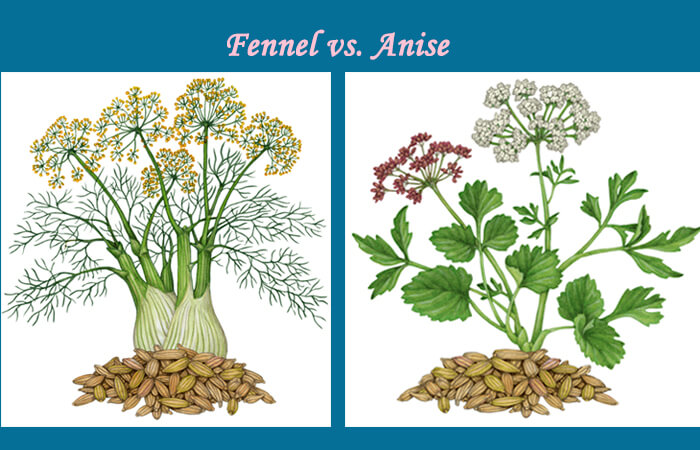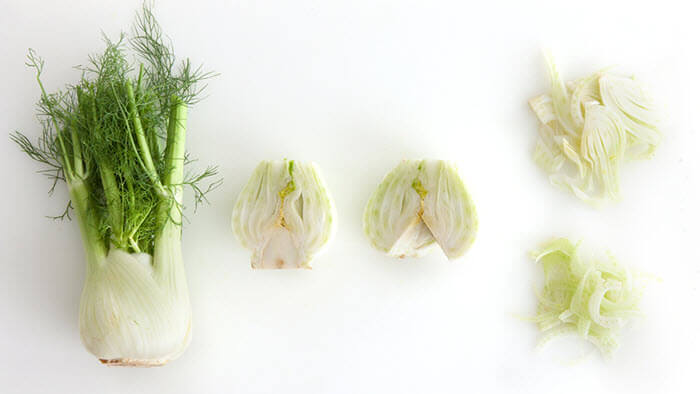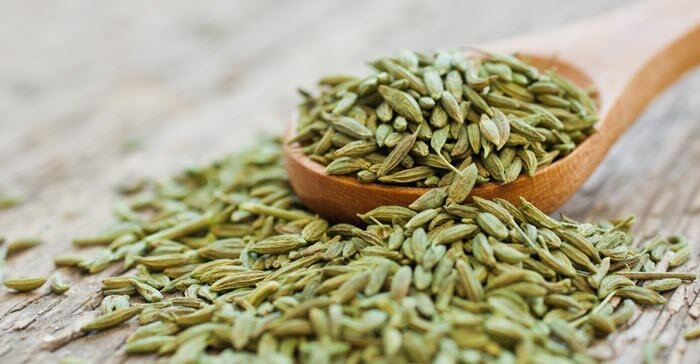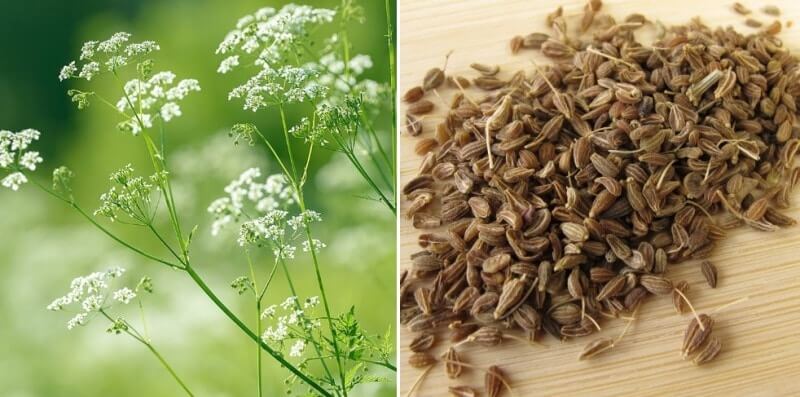It’s easy to confuse fennel and anise since both share the same characteristic black licorice flavor.
However, the two spices come from different plants and have their own unique cooking applications. While chefs prize fennel for its fresh leaves and bulbs, bakers use anise for its sweet seeds.
Read on to learn more about using fennel vs. anise in cooking. Knowing the similarities and differences between the two will help you decide which to use for your next meal.
Table Of Contents
What Is Fennel?
Fennel, or Foeniculum vulgare, is an edible plant from the Apiaceae family. It is closely related to other herbs such as dill. The plant is native to the Mediterranean and prefers cool temperatures and moderate rainfall.
As a perennial herb, fennel can flourish for years after planting. It’s easy to recognize thanks to its thick white stalks and feathery, bright green leaves. Everything from the tip to the roots of the plant is edible. Even the seeds and pollen are common components in gourmet cooking.
Cooks often use fennel for its fresh leaves and bulbs, which boast a mild licorice flavor. The seeds are sometimes used in baking and are small, ovular, and green to brown in color. They are easy to confuse with similar-looking anise seeds.
Some grocery stores may label fennel as anise due to similarities between the two. However, any leaves or bulbs in the produce section likely come from fennel plants.
What Is Anise?
Anise comes from the same family as fennel, but it is a completely different plant called Pimpinella anisum.
Anise is an annual plant [1], meaning you must replant it every year for harvest. It is also native to the Mediterranean and Southwest Asia and grows well in many of the same areas as fennel.
It’s relatively easy to tell live anise apart from fennel plants:
- The leaves are slightly denser and less feathery, the stalks more delicate
- The flowers a bright white instead of yellow
- The seeds, however, can be challenging to identify
- They are small, brown, and oval-shaped, making them similar in appearance to fennel seeds
People don’t often use the stalks, leaves, or bulbs of anise plants. Instead, dried seeds are the most common form of anise used in the kitchen. They have a sweet licorice taste used to make sweets, bread, pastries, and even fine liqueurs.
Common anise often gets confused for star anise [2], which also has a strong licorice flavor. However, these two spices come from different plants.
Star anise is the dried fruit of the Illicium verum plant and is easy to recognize thanks to its star-like shape. You can use it interchangeably with common anise in cooking.
Similarities of Fennel and Anise
Thanks to similarities in taste, people sometimes wonder: is anise the same as fennel?
Taste
Both anise and fennel share a distinctive taste thanks to the presence of compounds known as anetholes [3].
These compounds give both spices their black licorice flavor in the leaves, bulbs, and seeds of the plant.
Appearance
Fennel and anise seeds are also similar in appearance, from shape and size to coloration.
Both are small and ovular, and vary from yellowish-green to light brown. Seeds may come whole or ground up for a more potent flavor.
It can be easy to confuse anise and fennel thanks to the many similarities between the two spices. However, the two are different spices that boast a variety of unique uses in the kitchen.
Differences Between Fennel and Anise
Which Part Get Used
The most significant difference between fennel vs. anise is which part of the plant gets used.
In most cases, chefs prefer to use the fresh, leafy foliage and the crisp bulbs of fennel plants. For a bolder flavor, recipes may also call for fennel seeds or concentrated pollen. You can find all parts of the plant widely available in almost any grocery store.
On the other hand, anise is much more challenging to find fresh. Most people only use the seeds in cooking, either whole or ground. The bulbs and leaves are much milder in flavor and not found in many mainstream recipes.
How It’s Used
Anise and fennel also differ in how people use them.
While fennel is often the herb of choice for savory dishes, anise is more popular in sweet recipes such as candy and baked goods. Anise is also commonly used for flavoring drinks such as herbal tea, Ouzo, and Sambuca.
Anise has a more potent, peppery flavor than fennel, making the licorice taste stand out more as a flavoring. It also has sweeter undertones, which is why people prefer to use it in baking.
Fennel has a milder, more vegetal taste that won’t overpower other flavors, making it a popular choice for cooking delicate dishes such as seafood.
FAQs About Fennel and Anise
Here, we’ll answer the most common questions people ask about fennel vs. anise in cooking.
Can I use fennel instead of anise?
Fennel and anise both share a similar flavor profile. In most cases, it’s perfectly fine to substitute one for the other.
Remember that it’s best to use the same part of the plant that a recipe calls for when swapping out ingredients. For example, if a dish calls for anise seeds, it’s best to use fennel seeds as a replacement instead of the bulb or leaves.
What spices can replace fennel?
If you’re running low on fennel, anise isn’t the only potential substitute. Cumin, caraway, and dill seeds all share a similar flavor profile with fennel. They work well as a makeshift replacement, especially for savory dishes.
If a recipe calls for fennel leaves, fresh dill is similar enough in both taste and texture to serve as a substitute.
Conclusion
Though fennel and anise share many similarities, the two spices have different applications in the kitchen.
While fresh anise is rare, many people use dried seeds for their sweet, potent licorice taste.
Fennel, on the other hand, boasts a mild, more vegetal flavor. When in doubt, don’t be afraid to experiment and substitute to see which flavor works best for your palate.




